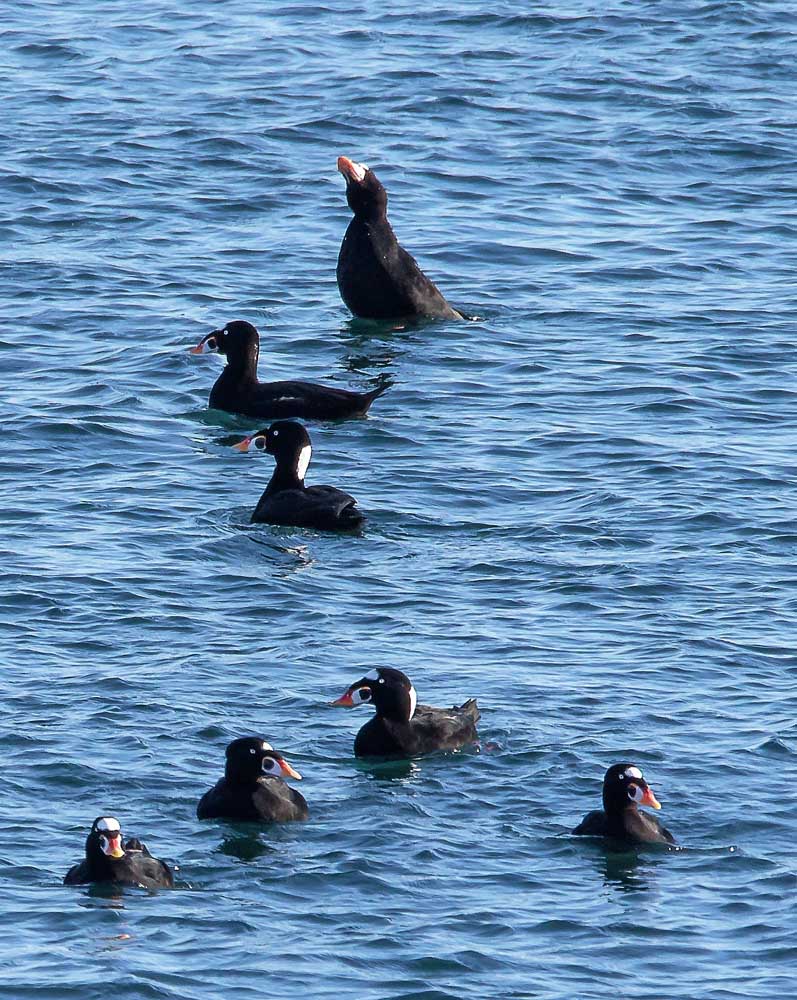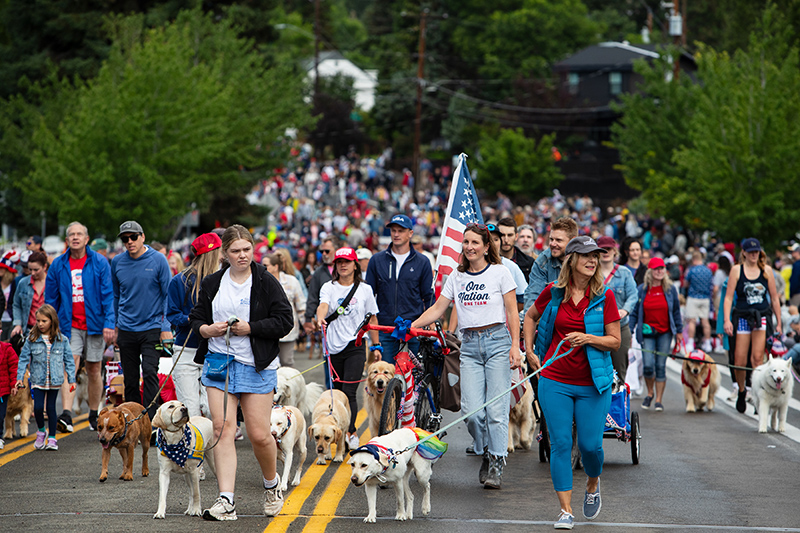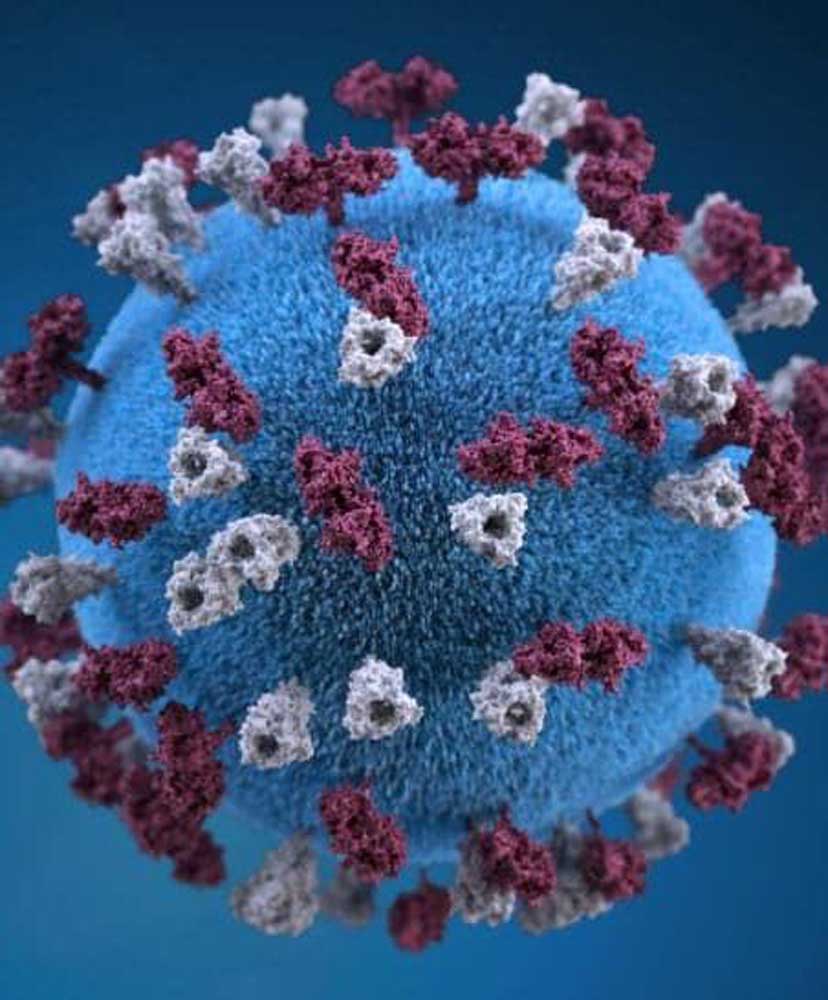Wild About San Juan Island
Published 6:00 am Wednesday, November 22, 2017

- A family of surf scoters, waterfowl with puffin-like markings, fish near Cattle Point at the southern end of San Juan Island. Myriad sea birds populate the waters of the San Juans, many of them with rookeries on small, uninhabited islands.
FRIDAY HARBOR, Washington —
If you spend even a few days on San Juan Island, you’ll become acquainted with all manner of creatures. You’ll encounter orcas and humpback whales, bald eagles and surf scoters, a prolific population of rabbits and red foxes, even a one-eyed seal named Popeye and a camel named Mona. (Mona’s best friend is Lisa the Llama.)
But you’ll have to arrive by sea or small plane, as there are no roads to this remote outpost or to its sister San Juan Islands. They are afloat in the Salish Sea between the U.S. mainland and Canada’s Vancouver Island, in the northwestern corner of Washington state.
Most travelers take the Washington State Ferry, as we did, from Anacortes, a marine voyage of about an hour and a quarter.
The ferry lands in Friday Harbor, San Juan County’s only incorporated community. The town of 2,500 has a Nantucket-like appeal, its warren of small shops, cafes and kayak-tour operators ascending gradually from the harbor, with its fishing boats and pleasure craft.
One hundred fifty years ago, you might have run into the village’s namesake, Joe Poalie Friday, a native Hawaiian who settled here (after 20 years on the lower Columbia) as a sheep rancher. A Sandwich Islander, he may have been unperturbed by the ruffled sensibilities of his fellow pioneers. Those were the Hudson’s Bay Company, which had claimed the island for the United Kingdom in 1845 and built a salmon station, and Americans who decided they had an equal right to live here and on adjacent Orcas, Lopez and Shaw islands.
In 1859, a British pig made the fatal mistake of rooting for potatoes in an American farmer’s garden. The shooting of the swine was the spark that started a 13-year standoff between American troops and Britain’s Royal Marines, posted on opposite sides of San Juan Island. The 1846 Oregon Territory treaty had not, after all, specified the precise channel dividing U.S. and Canadian territory. In 1872, Germany’s Kaiser Wilhelm I was called in to arbitrate the dispute, and he gave San Juan Island to the Americans.
Since that time, things have been pretty quiet here. Sailing ships and, later, steamships brought passengers, mail and freight to the harbor, leaving with island produce such as apples and pears, berries, salmon, chicken and eggs. Beginning in the 1960s, tourism inspired further investment in real estate and home construction, much of it by affluent retirees.
Among the lakes
We took a step back in time during our recent visit, spending a pair of nights at a rural resort reminiscent of our summer camp days.
The Lakedale Resort on Three Lakes sprawls across 82 acres on the north side of the island, halfway between Friday Harbor and the resort center of Roche Harbor. About half of that territory is taken up by a trio of spring-fed, man-made lakes — Neva, Dream and Fishhook — where trumpeter swans nest and breed during the winter months. In summer, the lakes lure trout and bass anglers, as well as young water-sports lovers for swimming and boating.
“There are so many outdoor activities for kids,” said Operations Director Richard Pitchford, “and there’s such high energy, such a family vibe, we find the parents get caught up remembering when they themselves were kids. They find the resort nostalgic, like it’s from another era.”
That would be especially true between May and September, when accommodations include canvas-sided tents beside the lakes. Thirteen units are classified as “cabins” that share a bathhouse and get their evening light from a lantern. Seven others, known as “cottages,” have king beds, private baths and indoor power and plumbing. Like a group of spacious yurts (now under construction), they have full fiber-optic cable and Wi-Fi. Guests can be in the outdoors without ever giving up the modern comforts of home.
During our autumn visit, we stayed in one of 10 lakeside lodge rooms. We shared our experiences with other guests beside a roaring fire, and were treated to a full breakfast each morning. The resort also has a half-dozen, three-bedroom log cabins with full housekeeping facilities and an additional 43 campsites and five RV spaces.
Pitchford told us that the acreage had once been an equestrian meadow. The trio of lakes were dug in 1967 and a 160-site campground opened. The current owners, who purchased the property in 2011, gave the 1980 lodge a major renovation and began experimenting with new types of lodgings. But they kept a rustic general store, a seasonal favorite of campers.
A high-jumper at UCLA in the ’90s, the athletic Pitchford has spearheaded a series of annual events that give Lakedale major cachet on the island. June 2018 will mark the sixth running of the Three Lakes Triathlon, followed a day later by a full marathon. A music festival brings jazz to the resort on Labor Day, and “Gourmet Glamping” showcases the work of top chefs on three separate summer evenings.
Exploring town
While Lakedale provides a fine base for exploring the island, we were glad to have initiated ourselves by spending our first night at the lovely Earthbox Inn and Spa in downtown Friday Harbor. Even in the off-season, it has a community feel, with many of its rooms built to face a small central garden, and bicycles are complimentary to lodging guests.
Not surprisingly, most of San Juan Island’s better restaurants are in Friday Harbor. Jason Aldous, formerly at outstanding restaurants on Camano and Lummi islands, is now practicing his culinary magic as executive chef of the Friday Harbor House, overlooking the harbor. Smoked antelope ribeye with bourbon-quince puree and chanterelle mushrooms was offered as a special on the night of our visit.
Another exceptional restaurant, we were told, is the Coho Restaurant, with fresh seafood and a top-flight wine list. We’ll save it for the next visit. The Blue Water Bar and Grill has modest traditional seaside offerings, while Mike’s Café & Wine Bar has an interesting vegan menu. We liked the Rocky Bay Cafe for breakfast and the Golden Triangle Restaurant for an inexpensive Thai lunch.
For evening entertainment, it would have been hard to beat a Friday night at the Rumor Mill, just a block from the ferry. A 10-piece big band rocked the room till the wee hours.
But our favorite place to eat on San Juan Island was the Duck Soup Inn, on Roche Harbor Road opposite Lakedale. Nestled in a grove beside a small pond — with ducks included at no extra charge — this longtime local favorite sources extensively from island providers in dishes like smoked Westcott Bay oysters and Jones Family Farm pork shoulder.
One of the joys of wandering the streets of Friday Harbor is visiting its numerous art galleries. The Arctic Raven Gallery features outstanding work by Native American and other artists on the Northwest coast and Alaska. The WaterWorks Gallery has more regional work, currently including a show by the late Guy Anderson, a contemporary of the better-known Morris Graves.
The San Juan Islands Museum of Art, which opened in downtown Friday Harbor in late 2014, now rotates eight to 10 exhibitions per year through its three galleries. Focused on artists from Washington, Oregon and southwestern British Columbia, it also hosts a regular lecture series and educational functions.
Nearby, the San Juan Historical Museum occupies eight buildings on a 19th-century farmstead. Open April to October or by appointment, the museum includes the James King home, barn, carriage house, root cellar, milk house, pioneer log cabin and even a jailhouse.
And if you drive the road to Roche Harbor, you may spot Mona the rescue camel, grazing with her friend Lisa the llama in a field opposite the San Juan Winery. The winery, by the way, makes two pretty good estate whites — a Madeleine Angevine and a Siegerrube. These rarely seen varietals comprise 80 percent of a white blend called Mona Vino Blanc, a friendly nod to the winery’s single-humped neighbor.
Whale watching
Friday Harbor’s most famous attraction may be The Whale Museum. Founded in 1979, the interpretive facility shares its knowledge of wild whales — especially those of the local Salish Sea ecosystem — through education and research programs.
Exhibits include life-size models and fully articulated skeletons, as well as hydrophones that detect underwater whale vocalization. Films and other displays focus on pinnipeds (seals and sea lions), porpoises and more marine mammals. There’s also a section on the region’s Native American reverence for these creatures.
It might be hard to find a citizen of Friday Harbor who doesn’t know at least a couple of resident orcas (killer whales) by name. Through its Orca Adoption Program, the museum provides detailed information on family groups (pods), including genealogy, individual markings, and scientific data on their lives. A database of whale sightings has been kept since 1976, and is a key factor in involving islanders young and old in stewardship of the endangered marine mammals.
Visitors to The Whale Museum may set out on an exploration of the Whale Trail, which links a series of coastal parks and other viewing locations. Year-round tour operators, offering expeditions by motor vessel and kayak, are based in the Friday Harbor marina just steps from the ferry terminal. (Keep an eye out near the fishing boats for Popeye, the one-eyed seal; she hangs out near the seafood shacks, beneath a statue erected in her honor.)
Tours may spot humpback, gray and minke whales as well as orcas, but the distinctly marked black-and-white killer whales are the biggest crowd pleaser. Their behavior includes breaching (leaping from the water) and spy-hopping (walking backwards on their tails). The Whale Museum maintains a research laboratory on the west coast of San Juan Island at Lime Kiln Point State Park, also known for its picturesque lighthouse. The hydrophone here can be counted upon to pick up the sounds of whales calling to one another beneath the sea, if there are any in the vicinity.
Roche Harbor
Another place from which to explore the island’s marine culture is Roche Harbor, an old-time resort community on a beautiful inlet at the island’s northwestern corner.
The Hudson’s Bay Company established a presence here in the mid-1840s, building a trading post at the head of the harbor. Three decades later, brothers Robert and Richard Scurr discovered lime deposits and built a pair of kilns. Tacoma lawyer John McMillin bought the property in 1886, founded the Tacoma and Roche Harbor Lime Company and built the 20-room Hotel de Haro on the footprint of the original trading post. It’s still here today, having welcomed guests including Theodore Roosevelt and John Wayne.
McMillin discovered a ledge of pure limestone extending three-quarters of a mile to Westcott Bay. He quarried the rock from a 250-foot-high bluff, loaded it onto horse-drawn wagons (later trucks) and hauled it to the kilns, which grew in number to 13. A couple of these, and the diesel-powered generators that powered them, are built into a hillside near the hotel.
As early as the 1890s, a modern company town had grown around the hotel with homes, a church, a school, a company store and a state-of-the-art lime factory complete with warehouse, barrel works, docks, offices and shipping piers. At its peak, about 800 people lived in the village, which had its own power, water and telephone systems.
The resort era began in 1956 after a Seattle businessman bought the 4,000-acre community. Present ownership is continuing to expand with modern guest houses extending uphill from the harbor.
But a great deal of historic charm remains. The nondenominational Our Lady of Good Voyage Chapel is a popular place for weddings. The original McMillin family home, next to the hotel, is now a fine-dining restaurant. And the columnar Mausoleum overlooking Roche Harbor, the burial place for the resort’s founding family, is a masterpiece of architectural symbolism.
The old company offices, rebuilt after being destroyed by fire in 1923, include a general store and the Lime Kiln Cafe, a popular spot for visiting yachters to enjoy breakfast and lunch. And atop the hill above the resort, the open-air San Juan Islands Sculpture Park has more than 150 unique sculptures on acres of low rolling hillside.
Historic sites
San Juan’s nods to its war that never happened are the two components of San Juan Island National Historical Park. The degree of hostility in this conflict should not be overestimated: At least once, the Royal Marines marched 13 miles to American Camp to celebrate the Fourth of July, and U.S. troops reciprocated by sailing to English Camp to observe Queen Victoria’s birthday. The young men challenged one another in horse racing and foot races as they picnicked and hoisted beers together.
Today, English Camp, only a couple of miles south of Roche on Garrison and Westcott Bays, retains its blockhouse, commissary and barracks (now the visitor center) as well as a formal English garden. A hike to the summit of 650-foot Young Hill provides a fine view across the Haro Strait to Vancouver Island.
American Camp, at the southeasterly extreme of San Juan Island, still has its officers’ quarters and parade ground, as well as laundress quarters. A system of trails leads to the remains of a fort and sheep ranch. A museum displays shell pendants and harpoon points, remnants of ancient native habitation.
The South Beach section of American Camp is overpopulated with rabbits and their chief nemeses, red foxes. Both might casually be seen on a short drive down Pickett’s Lane. And only a couple of miles further, at the Cattle Point Interpretive Area, colorful surf scoters and other waterfowl share the island’s southern point with orcas and, frequently, sea otters.
This is a great place for humans to visit, but somehow, the animals have the upper hand.
— John Gottberg Anderson can be reached at janderson@bendbulletin.com.
NOV. 19: Basques of the Great Basin
If you go
EXPENSES FOR TWO
Driving miles, Bend to Anacortes, 820 miles (roundtrip) @ $2.50/gallon $82
Meals en route $40
Washington State Ferry, Anacortes-Friday Harbor (roundtrip) $59.05
Lodging, Earthbox Inn + Spa $170
Dinner, Friday Harbor House $68.32
Breakfast, Rocky Bay Cafe $38.28
Admission, Whale Museum $10
Lunch, Golden Triangle $21.41
Lodging (two nights, with breakfast), Lakedale Resort $370
Dinner, Duck Soup Inn $63.92
Dinner, Blue Water Bar & Grill $65.35
TOTAL $988.33
(All addresses in Friday Harbor, Washington)
INFORMATION
San Juan Island Chamber of Commerce. 165 First St. S.; sanjuanisland.org, 360-378-5240.
LODGING
Earthbox Inn and Spa. 410 Spring St.; earthboxinn.com, 360-378-4000, 800-793-4756. Rates from $170.
Lakedale Resort at Three Lakes. 4313 Roche Harbor Road; www.lakedale.com, 360-378-2350, 800-617-2267. Lodge rates from $185; lower seasonal rates for varied accommodation types.
Roche Harbor Resort. 248 Reuben Memorial Drive; www.rocheharbor.com, 360-378-5757, 800-451-8910. Seasonal rates from $120 (shared bath), $200 (private bath). McMillin’s restaurant serves dinner seasonally; moderate to expensive.
DINING
Blue Water Bar and Grill. 7 Spring St.; bluewaterbarandgrill.com, 360-378-2245. Three meals daily. Moderate
Coho Restaurant. 120 Nichols St.; cohorestaurant.com, 360-378-6330. Dinner Wednesday to Saturday (extended summer hours). Expensive.
Duck Soup Inn. 50 Duck Soup Lane (at Roche Harbor Road); ducksoupsanjuans.com, 360-378-4878. Dinner Thursday to Sunday. Expensive.
Friday Harbor House Restaurant. 130 West St.; fridayharborhouse.com, 360-378-8455. Brunch every day, dinner Thursday to Monday. Moderate to expensive
Golden Triangle Restaurant. 140 First St.; facebook.com, 360-378-1917. Lunch and dinner Monday to Saturday. Budget to moderate
Mike’s Café & Wine Bar. 135 Second St.; mikescafeandwinebar.com, 360-378-0265. Lunch Saturday and Sunday, dinner nightly. Moderate
Rocky Bay Cafe. 225 Spring St.; 360-378-5051. Breakfast and lunch every day. Budget to moderate
ATTRACTIONS
Arctic Raven Gallery. 130 S. First St.; arcticravengallery.com, 360-378-3433.
San Juan Historical Museum. 323-405 Price St.; sjmuseum.org, 360-378-3949.
San Juan Islands Museum of Art. 540 Spring St.; sjima.org, 360-370-5050.
San Juan Island National Historical Park. American Camp on Cattle Point Road; English Camp on West Valley Road. nps.gov/sajh, 360-378-2240.
San Juan Vineyards. 3136 Roche Harbor Road; sanjuanvineyards.com, 360-378-9463.
WaterWorks Gallery. 315 Argyle St.; waterworksgallery.com, 360-378-3060.
The Whale Museum. 62 First St. N.; whalemuseum.org, 360-378-4710.








